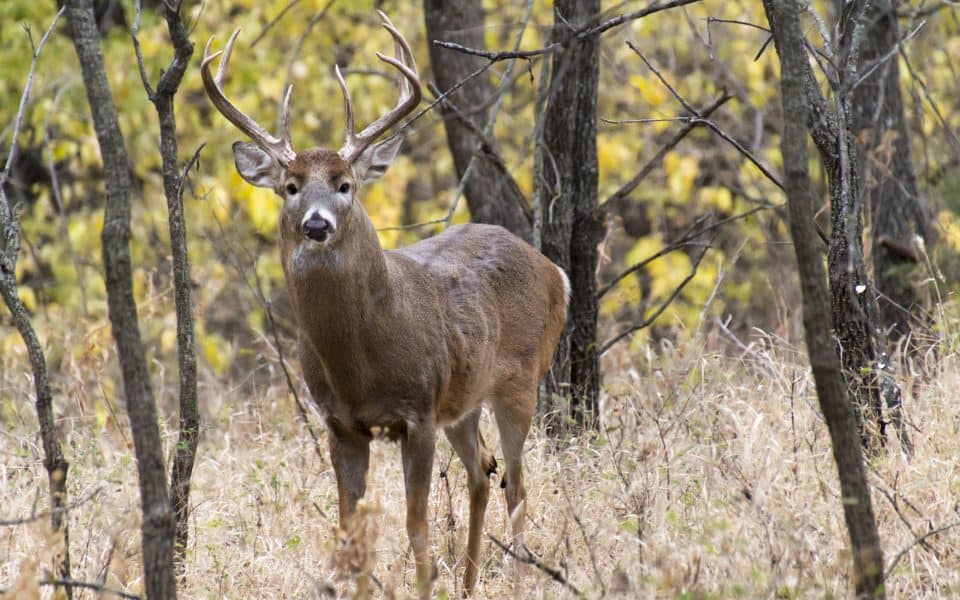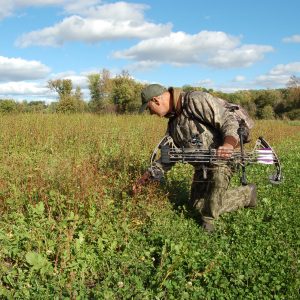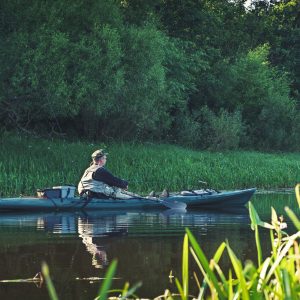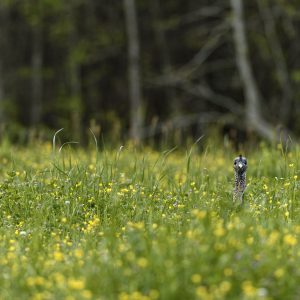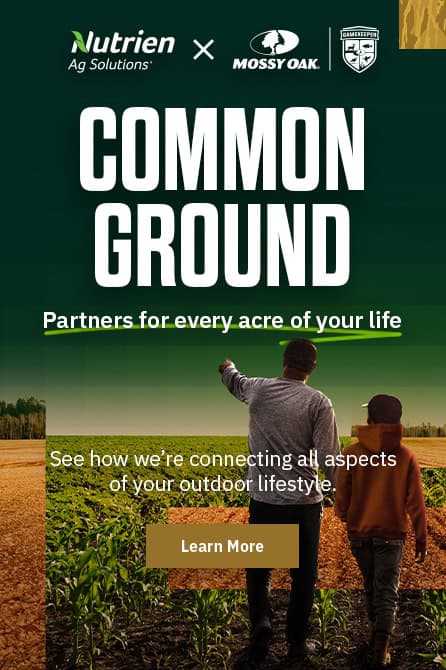I once asked legendary bowhunter Myles Keller how he would go about bowhunting the vast woodlands of Maine, or any big woods. It’s almost a reverse image of the Midwest, where open ground dominates and cover is limited to small woodlots, hedgerows and riparian zones. It’s big woods with lots of cover and few openings. He paused to consider my question, then replied, “You need to find funnels, something that will restrict deer movement to a confined area. If it’s not cover, look at terrain and obstacles.” That advice has served me well over the years. I now consider funnels to be among the most important features to look for when scouting deer hunting locations, and I’ve found them in a range of diverse environments.

Vadim Zakharishchev
The Path of Least Resistance
First let’s look at some basics on why deer travel where they do. Outside the rut, deer movement consists largely of traveling between feeding and bedding areas. They maximize survival by minimizing energy expenditure and exposure to danger. If undisturbed, deer will more often take the easiest route — the path of least resistance. Whether disturbed or not, but especially when disturbed, they prefer cover to open ground, and the thicker, the better. Knowing that makes it easier to locate and identify funnels. Apply that logic to the landscape and possibilities begin to pop out. Anything that might persuade or force deer to travel through a constricted corridor is what you’re looking for. It doesn’t have to be a physical object that guides or restricts their movement, it can simply be the topography or the angle of the grade.
Habitat
I hope folks who hunt the Midwest realize just how good they have it. Every time I travel there I feel like Superman on Planet Earth. A quick glance at a satellite image will show you where deer are more likely to travel. All the same, let’s take a closer look.
Satellite imagery, available in apps like Google Maps, OnX, or in virtually all smart phone hunting apps provides a very useful bird’s eye view of the landscape. In areas dominated by agriculture, identifying potential funnels is relatively easy. Just look for the aforementioned hedgerows, windrows, riparian corridors and cover strips. These are the areas deer will more often use as travel corridors. They still need a reason to travel there. If the corridor connects larger patches of cover or cover and food you might be onto something. If it dead ends in a residential area or a reservoir, you might want to look elsewhere.

Bob Humphrey
Somewhat the same applies on industrial timberland. Cutovers represent the “negative” ground where deer are less likely to travel and strips of timber connecting larger blocks are the positives. In both cases these strips are often in riparian areas or wetlands, either because they’re protected by regulations or the wet ground makes it impractical to farm or harvest timber there. Even in larger blocks of contiguous cover, riparian corridors tend to funnel deer movement because they provide more and better cover.
Once you’ve narrowed your list of potential pinch points down it’s time for some intensive, boots on the ground scouting. What looks good from the air might not be so appealing on the ground. Obvious sign like tracks and trails is good news while a lack thereof might suggest looking elsewhere.
Cover type also matters. For example, deer might be more inclined to move through areas of softwood like cedar breaks or young pine stands than open hardwoods, or they might prefer scrub wetlands over open marshes or bottomland forest — places that are easier to travel through and offer more protection. Local habitat conditions can vary considerably across the landscape but you can still apply the same logic.

Water
As noted, deer prefer the thick growth of riparian corridors and you’ll often find heavy trails running alongside a river or large stream. They do cross these waterways and often it’s where some type of funnel makes for a more favorable crossing location. It may be an area where the stream channel narrows, providing a shorter crossing, or where the stream shallows as it flows over rock or harder sediment. The area just downstream of a beaver dam can be a killer funnel. My experience has also been that on a winding river, deer are more likely to cross at a river bend. It may be because they can continue on their direction of travel rather than making a 90 degree turn.
Much the same applies to waterbodies. Deer can and do swim across them, but more often go around. That makes the bottom or top ends of lakes or ponds potential funnels, especially if they’re long and narrow. If the lake narrows and then widens again, deer may swim across the narrowest constriction. Conversely, the narrowest point on a peninsula or isthmus works similarly as a funnel.
Topography
Remember the comment about “the path of least resistance?” There’s a range of topographical features that could represent resistance or obstacles to deer movement. Some are obvious, others are subtle. Another of my more productive hotspots was a strip of flat ground about 100 yards across. The land dropped off steeply on one side, representing an obvious impediment. On the other, the slope was rather shallow, hardly an obstacle; yet the deer traveled far more often on the flat ground.
Saddles are a subtler, but often productive form of funnel. Basically, it’s a low spot between two higher ones. A deer could go up and over either side but will expend less energy by going through the pass, making it a funnel.
Steep grades are obvious obstacles. I’ve seen deer go up some amazing slopes but they’d much rather take the easy route if undisturbed. Thus they’re much more likely to travel up a break or draw than a side hill. Furthermore, deer are also more likely to travel around the head of a draw rather than traveling down one side and back up the other, making that a doubly effective pinch point.

Betty Shelton
Man-Made Funnels
Just like rubs and scrapes, funnels aren’t always in the optimal place for an ambush, but in both cases you can sometimes create them to coax deer into going where we want them. When building food plots or even trimming shooting lanes you end up with slash. Deciding what to do with it should be viewed not as a problem but an opportunity. Use those branches, limbs, roots and even trees to create natural barriers, funneling deer movement where you want it.
Especially when designing food plots you should consider funnels. Deer might enter or cross a square or rectangular plot about anywhere. In an hourglass shaped plot, they’ll be more inclined to cross at the narrowest point…the funnel. Regularly shaped food plots are more agriculturally efficient, but irregularly shaped ones provide more pinch points.
While slash and brush make good faux fences, you can use the real thing in livestock country. With the landowner’s permission, of course, removing a section or even just tying down the top strand can create an instant funnel.
Synthesis
By now you should have a pretty good idea what to look for and where to find it. Any of the above features can and will funnel deer movement into a more defined area, but multiple features in the same area will be more effective at doing so, and the more the better. Imagine an irregularly-shaped food plot with a fence along one edge and a gap in the fence where a finger of trees juts out into the plot. Picture the point where a stream bottom comes closest to a steep ledge wall.
Conclusion
It’s important to keep in mind these are all generalities. Deer can, and sometimes do travel almost anywhere, including up some radically steep inclines, across large waterbodies and roadways, over seemingly insurmountable fences and through nearly impenetrable cover. It’s all a game of percentages, trying to figure out paths they are more likely to follow, where habitat, terrain or other features restrict movement to a narrow path.
Join our weekly newsletter or subscribe to GameKeepers Magazine.
Your source for information, equipment, know-how, deals and discounts to help you get the most from every hard-earned moment in the field.

